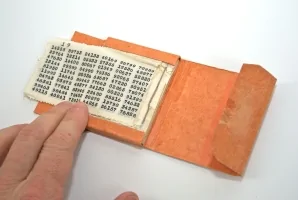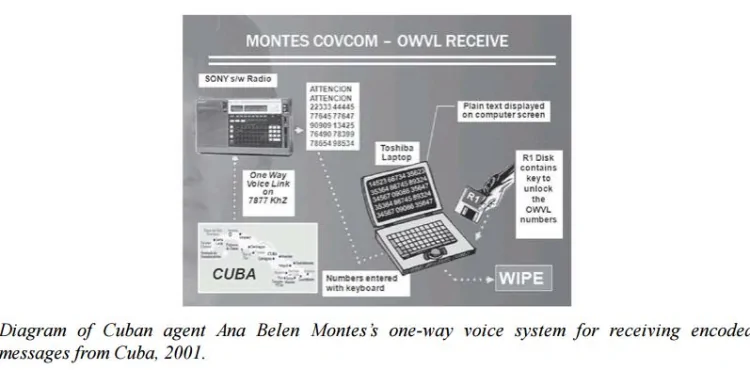A numbers station is a shortwave radio station that transmit encrypted messages in the form of numbers. These transmissions which many people find to be a mystery are used by foreign intelligence agencies around the world to send messages to their spies abroad. The numbers are sent on predetermined frequencies with the use of automated voice, Morse code, or even digital modes.
The majority of number stations use a one-time pad encryption method. With the use of a one-time pad, it’s impossible to decode the message without the time pad key. Only the person who has a copy of the one-time pad would be able to decode the message.
This allows for complete anonymity which is why it is used today for covert operations. With the message being sent through a shortwave broadcast, the message can be heard from long distances and the identity of the people involved in the operations are kept secret. The time pad is only used once and destroyed after use to maintain its security.

[Example of a genuine one-time pad booklet, picture from the Crypto Museum]
Proof of Government’s Operating a Numbers Station
Government agencies are reluctant to admit operating any number stations, and so there are almost no confirmations of any government running them. A few instances of governments releasing their knowledge and involvement in number stations include the Swedish Security Service releasing an S10 recording, the Latvian National Archives KGB archive, and the Polish Institute of National Remembrance releasing info about G02.
Although there have been several cases where spies had been arrested and prosecuted such as the Cuban Five who were arrested for spying since they had received and decoded messages from Cuban number stations. There has also been the case of a Russian couple who were arrested for decoding Russian polytones from XPA.
Each station is usually given a nickname depending on what is included in the broadcast. For example, G03 is given the name “Gongs or Chimes” since its intro and outro signal includes the sounds of gongs. Many Morse stations do not have nicknames though since they do not include anything specific that differs them from another.
ENIGMA Naming System
Almost all number stations include a few common elements which are the ID, group count, and message. The ID is the group of numbers that indicates who the message is intended for, the group count is how many groups of 4 or 5 digit numbers that are sent in the message, and the message is what the recipient is ultimately going to decode to get his or her orders from. Every transmission usually has an intro or end phrase, such as “ende” or will just end with numbers (ex. 000 000).
Many number stations are well known because of the music that they play such as The Lincolnshire Poacher. This has become less popular with today’s number stations, but there are still a few such as E25 or V13 that use them. There also used to be more stations that read their numbers with a live voice, but now there are no more stations like this. Voices that are synthesized and created by machines are used instead.

Station Language and Mode Prefix Designations
First created by ENIGMA is a system to categorize stations by what language (or mode) they use:
E – English
G – German
S – Slavic
V – Other Languages
M – Morse
X – Noise
XP – Polytones
T – Unknown (Removed)
More Digital Prefixes
SK – RDFT Digital Mode
HM – Hybrid Mode
DP – Digital Pseudo-Polytone
F – Frequency-shift keying digital modes
P – Phase-shift keying digital modes
A Scene from the Soviet movie “TASS is Authorized to Announce..” 1984. A CIA Agent in Moscow codenamed Trianon receives a numbers station broadcast.





